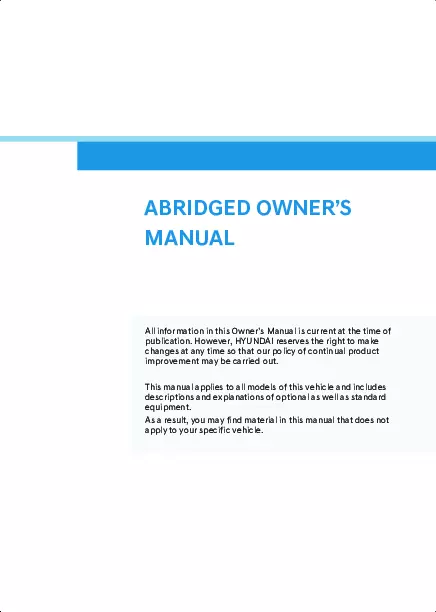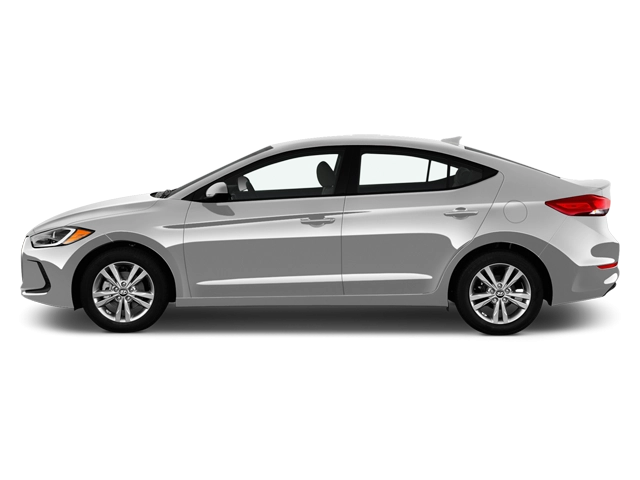2025 Hyundai Elantra Owner's Manual

Table of Contents
2025 Hyundai Elantra Overview
Introduction
The 2025 Hyundai Elantra represents a perfect blend of performance, style, and cutting-edge technology, making it an ideal choice for modern drivers. With its bold aesthetics and innovative design, the Elantra continues to emphasize Hyundai's commitment to crafting vehicles that are not only visually appealing but also equipped with powerful performance features and advanced safety systems. Whether commuting through city streets or embarking on a weekend adventure, the Elantra provides an engaging driving experience and an array of options to satisfy various preferences.
Powertrains
The 2025 Elantra offers a range of powertrains tailored to suit different driving styles. The base model features a spirited 2.0-liter inline-four engine, delivering a balanced blend of performance and efficiency. For drivers seeking more thrill, a turbocharged 1.6-liter engine in the sporty N Line trim elevates the driving experience, providing exhilarating acceleration and engaging dynamics. Additionally, an eco-friendly hybrid variant is available, combining a gasoline engine with an electric motor to maximize fuel efficiency and reduce emissions, making it perfect for environmentally conscious consumers.
Trims
The Elantra lineup includes several trims, ensuring that every driver finds their perfect match. Starting with the well-equipped SE, moving up to the more luxurious SEL, and culminating in the high-performance N Line, each trim offers unique features and options. The ultimate performance and luxury experience can be found in the Elantra Limited, which includes premium touches like leather upholstery and advanced driver-assist systems to elevate comfort and convenience.
Features
The 2025 Hyundai Elantra is loaded with innovative features designed to enhance the driving experience. A 10.25-inch touchscreen infotainment system comes standard, providing seamless smartphone integration through Apple CarPlay and Android Auto. Safety features abound, with standard advanced safety technologies like Forward Collision-Avoidance Assist and Lane Keeping Assist. Additionally, the Elantra offers a premium sound system, heated front seats, and available navigation to ensure every journey is enjoyable.
Owner's Manual
The 2025 Hyundai Elantra comes with a comprehensive owner's manual, guiding new owners through the vehicle's numerous features and specifications. It provides essential maintenance tips, troubleshooting guides, and safety information to ensure optimal performance and longevity. This manual serves as a valuable resource, empowering owners to fully understand and enjoy every aspect of their new Elantra.
User manual download
The Hyundai Elantra owner manual for the 2025 model year is to be found in PDF downloadable format on this page. The owner manual for the model year 2025 is free and in English, but the repair manuals are usually not easy to get and may cost more.
Manual Questions
Fill the form below and someone will help you!

